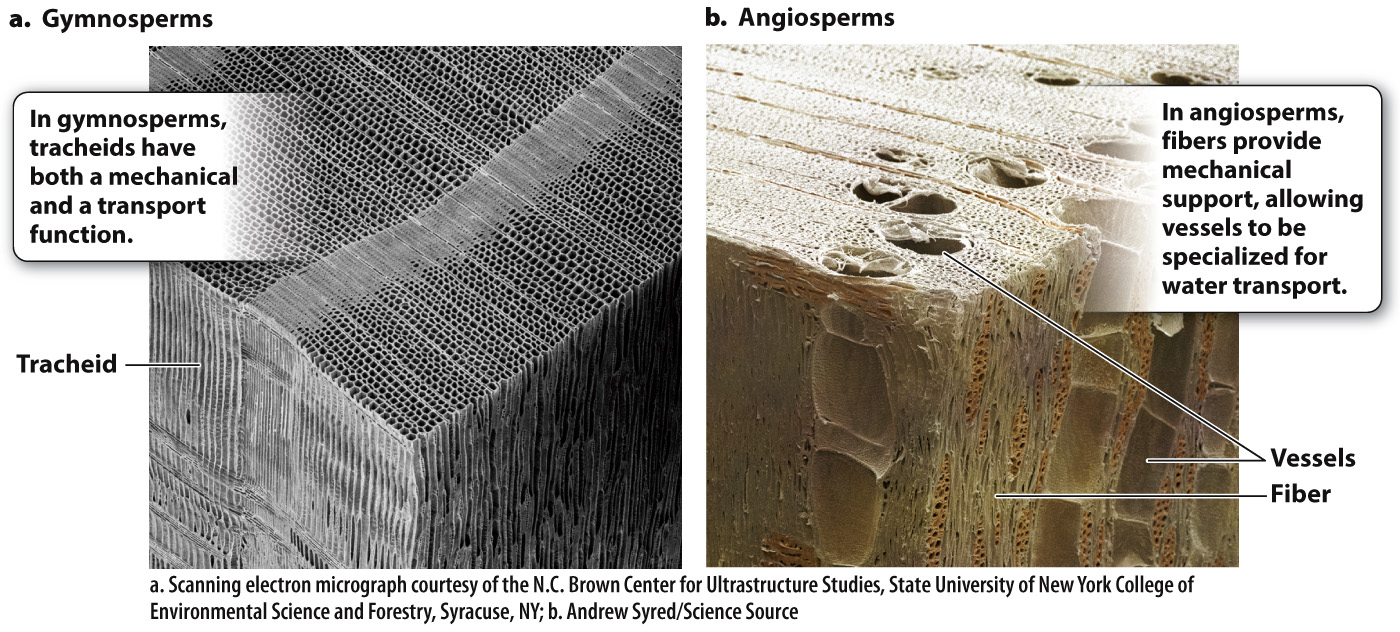Wood has both mechanical and transport functions.
We have seen that as a tree grows, its secondary xylem fulfills the two roles of secondary growth: to provide trees with the strength and stability to stand upright and support large crowns, and to transport water and nutrients from the roots to the leaves. In most gymnosperms, a single cell type, the tracheid, fulfills both functions (Fig. 31.15a). As discussed in Chapter 29, tracheids are single-

In contrast, the wood of angiosperms is diverse in structure because xylem cells mature into several distinct types that separate the functions of water conduction and mechanical support (Fig. 31.15b). Fibers are narrow cells with extremely thick walls and almost no lumen; their primary function is support. In contrast, vessel elements can be extremely wide cells; their primary function is water transport (Chapter 29). The largest vessel elements are close to 0.5 mm in diameter and thus visible to the naked eye. Vessel elements can be much wider than tracheids because the fibers provide support. Because vessel elements develop open connections that link them end to end with other vessel elements, creating multicellular xylem vessels, angiosperms can produce wood that transports water more efficiently than the wood of gymnosperms.
The ability to form xylem vessels has a number of important consequences. One is that angiosperms can have higher rates of water flow through their stems than is possible with wood that contains only tracheids. As a result, angiosperms sustain higher rates of CO2 uptake and thus higher growth rates. In addition, because vessels can be much more efficient than tracheids at transporting water, angiosperms can devote a smaller fraction of their wood to cells for water conduction, and a larger fraction to other cell types. The wood of some angiosperms contains many fibers, in extreme cases resulting in wood that is so dense that it sinks. These dense woods are extremely strong, allowing trees to create spreading crowns with outstretched branches. Such “hardwoods” are useful as flooring materials and furniture. The wood of other angiosperms contains a high percentage of living cells instead of fibers, and this wood has a very low density. Balsa trees, whose wood is used in building model airplanes, are a good example.